Looking for a new way to spice up your dinner routine? Congolese recipes offer a delicious blend of flavors that will bring fresh new life to the dinner table. From flavorful dishes like Mpondu and Nyembwe to the traditional Akwangya, from popular Congo street food dishes to traditional family favorites, and from savory beef dishes to sweet desserts, the cuisine of the Congo is an unbelievable mix of rich flavors, aromas, textures and colors.
We will introduce you to the tantalizing world of Congolese recipes, and provide some tips on how to create them at home and provide a few easy recipes that even beginners in the kitchen can prepare. You will get an understanding of why Congolese recipes are so flavorful and varied, and also find out how easy it is to get started with your own Congolese cooking.
Congo food is a culinary delight that has been enjoyed for centuries. Rich in history, the vibrant tastes of Congo have tantalized the palates of locals and travelers alike. Get an overview of traditional Congolese dishes and cooking techniques, then explore the cultural history of Congo food. For those who appreciate good food, this is an opportunity to delve into the flavors, spices, and stories of a truly unique and delectable cuisine.
The Congo is an excellent spot for trying something new and savoring different flavors. Learn about the rich history and culture behind Congo food, discover some mouth-watering recipes and learn about the best ingredients to create that authentic flavor.
1 Best Congolese Recipes
1. Congolese Fumbwa Recipe

Congolese Fumbwa is a staple in Congolese food, known for its rich flavors and nutritious ingredients. This African dish is made with fumbwa, also called wild spinach or cassava leaves, which are finely chopped and simmered in a flavorful broth. It is a common component of traditional African recipes from the Democratic Republic of the Congo, highlighting the importance of leafy greens in African food recipes.
African cooking techniques involve slow simmering to enhance the flavors, allowing the ingredients to meld together harmoniously. Fumbwa is typically prepared with palm oil, which gives it a rich, deep color and enhances its earthy taste. Ground peanuts or peanut butter are often incorporated, adding a creamy texture that makes this dish stand out among other African stew variations. Some versions of this dish include dried fish or smoked meat, giving it an extra layer of savory umami flavor that pairs well with the nutty richness.
Fumbwa is typically paired with fufu, rice, or boiled plantains, making it a well-rounded and filling meal. In many African food recipes Congo-style, the dish is complemented with smoked fish or meat, enhancing its depth and protein content. The addition of onions, garlic, and hot peppers contributes layers of flavor that make this dish a favorite among African foods. This combination makes Fumbwa one of the best Congolese food options for those seeking a healthy, protein-rich, and flavorful meal. Whether served as a side dish or a main course, it remains a key component of Congolese food recipes. Its rich, slightly nutty, and earthy taste makes it a dish that perfectly represents the balance of flavors in African food healthy cooking.
2. Congolese Liboke Recipe
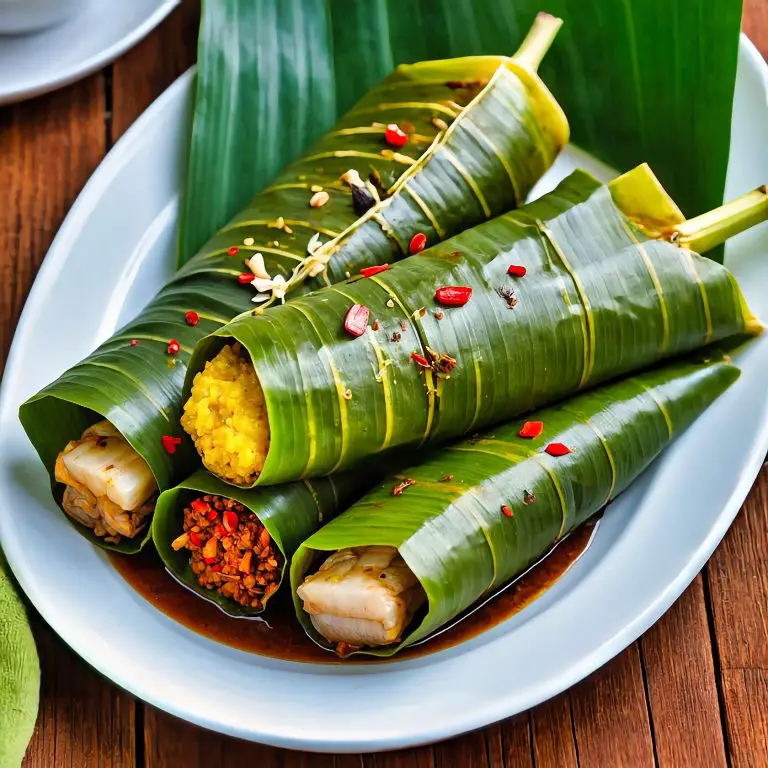
Congolese Liboke is a well-loved dish in African cooking, featuring fish or meat wrapped in banana leaves and slowly cooked over hot coals or steamed. This preparation technique locks in moisture, allowing the flavors to infuse deeply into the protein. The banana leaves impart a subtle earthy aroma, adding to the overall richness of the dish. This traditional African recipe is widely enjoyed in the Democratic Republic of the Congo and across Central Africa.
Best Congolese food recipes like this one highlight the use of aromatic spices and herbs, giving the dish its distinctive taste. Depending on regional variations in Congolese African food, Liboke may include fish such as tilapia or catfish, marinated with onions, garlic, chili, and other seasonings. These ingredients create a well-balanced African stew-like consistency when the juices mix inside the leaf-wrapped parcel. Some variations use chicken or beef instead of fish, providing an alternative protein source while maintaining the signature flavors of traditional African recipes.
African food on a plate often includes plantains or cassava as a side dish, complementing the savory notes of Liboke. This African cooking method is commonly found in West African food traditions and remains a cherished part of Congo food culture. Liboke is a perfect example of how to cook Congolese food using indigenous ingredients and time-tested techniques. The slow-cooking process ensures that the flavors meld together beautifully, resulting in a dish that is both tender and deeply flavorful. Some variations of this recipe incorporate ground peanuts or palm oil for added richness, making it a versatile part of traditional African recipes. Whether enjoyed at home or in local markets, Liboke is one of the best Congolese food dishes for those looking to explore the deep flavors of African cooking.
3. Congolese Makayabu Recipe
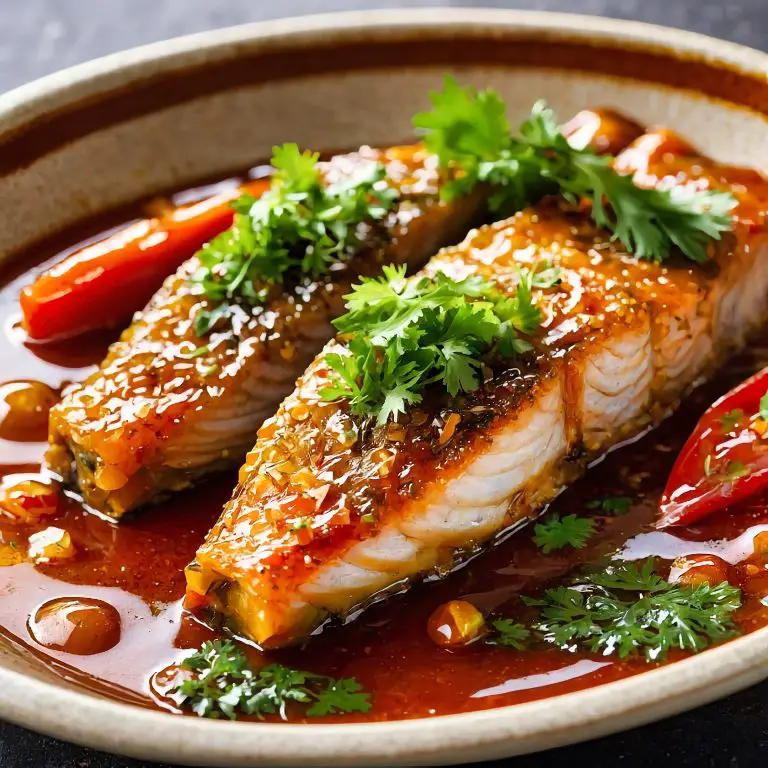
Congolese Makayabu is a popular dish in Congolese food recipes, featuring salted fish that is first rehydrated before being cooked with tomatoes, onions, and a variety of spices. This dish is a staple in African food recipes from the Democratic Republic of the Congo and is commonly enjoyed as part of a traditional Congolese food platter. The unique process of preserving the fish enhances its flavor while ensuring a long shelf life, making it an important ingredient in many African cooking traditions.
African food easy recipes like this one emphasize bold and simple flavors. The drying and salting process of the fish preserves it, while the cooking process reintroduces moisture, creating a balanced texture and taste. The dish is simmered in a sauce of tomatoes, garlic, and onions, creating a savory and slightly tangy flavor that pairs well with common African food accompaniments. Additional ingredients such as bell peppers, bay leaves, and chili peppers enhance the depth of flavor, giving Makayabu a distinctive taste. Some variations include coconut milk, adding a creamy texture that complements the salty and tangy flavors.
This dish is commonly served with rice, fufu, or boiled plantains, making it a hearty addition to traditional African recipes. The combination of dried fish and fresh ingredients gives it a robust and distinctive flavor. Many consider Makayabu one of the best Congolese food dishes due to its satisfying taste and long-standing popularity in African food recipes Congo-style. Some variations incorporate vegetables such as spinach or eggplant, making it a versatile and nutrient-rich addition to Congolese food recipes. The balance of preserved fish with fresh produce highlights the diversity of flavors found in African cooking. Makayabu remains an essential part of African food healthy eating traditions due to its high protein content and satisfying taste.
4. Congolese Ya Jean Recipe

Congolese Ya Jean is a rich and flavorful African stew made with a combination of vegetables, meat, and traditional seasonings. Like many Congolese recipes, it is slow-cooked to enhance the complexity of its flavors. The dish is a staple in African food recipes from the Democratic Republic of the Congo, often served during family meals and special gatherings. The slow cooking process allows the ingredients to blend perfectly, resulting in a thick and flavorful stew.
African food vegetarian versions of Ya Jean can be prepared by substituting meat with mushrooms or other hearty vegetables. The dish’s thick sauce results from its slow simmering, which allows the flavors to meld together beautifully. Commonly used spices include bay leaves, garlic, and pepper, adding depth to the dish. Some variations of this dish include groundnut paste or palm oil, further enriching its flavor and texture. Tomatoes, onions, and chili peppers create a well-rounded base, enhancing the dish’s aromatic qualities.
This stew is often served with cassava, plantains, or rice, making it a versatile part of Congolese food recipes. It is a great representation of African food healthy cooking techniques, offering both taste and nutrition. Ya Jean’s hearty composition makes it an ideal choice for those looking to experience authentic African foods in a wholesome, satisfying way. The slow cooking process ensures the meat is tender, while the sauce thickens to create a comforting meal. The dish reflects the best of Congolese African food by combining simple, fresh ingredients with time-honored cooking methods that make it a popular dish among traditional African recipes. It remains a highly regarded dish within African food Nigeria and Central African cuisine, showcasing the adaptability and depth of flavors in African cooking.
5. Mayebo by Global Table Adventure
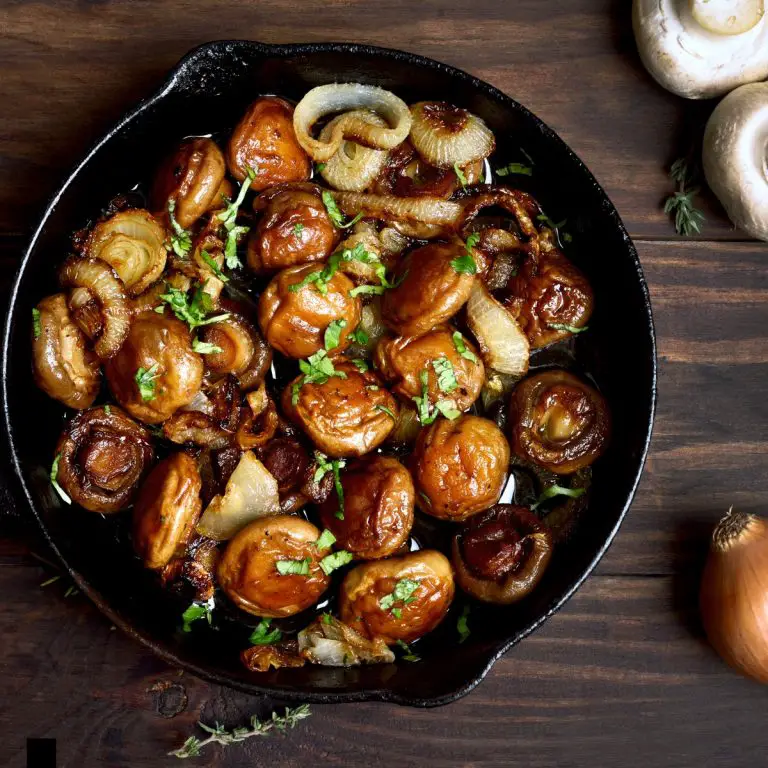
Congolese Mayebo is a flavorful African dish that showcases the rich and diverse ingredients typical of Congolese food. In this traditional African recipe, mushrooms—referred to as “Mayebo” in Lingala—are the star ingredient. The dish begins with a selection of fresh mushrooms, such as button, shiitake, or crimini, which are thoroughly cleaned and sliced. In African cooking, these mushrooms are sautéed in vegetable oil over medium-high heat until they release their moisture and become tender. This method is common in many African food recipes, including those from the Democratic Republic of the Congo.
Once the mushrooms are cooked, fresh lemon juice is added, imparting a bright and tangy flavor that complements the earthiness of the mushrooms. Seasoning with salt and freshly ground black pepper enhances the overall taste, making it a delightful component of African food platters. This preparation is not only simple but also highlights the emphasis on fresh, natural flavors found in traditional African recipes. The use of mushrooms provides a hearty and satisfying element, making it a popular choice in Congolese food.
Mayebo is often served as a side dish alongside staples like fufu, rice, or plantains, which are common in African food on a plate. Its simplicity and reliance on readily available ingredients make it an excellent example of African food easy to prepare. Additionally, the dish aligns with African food healthy practices, as it is low in fat and rich in nutrients. For those interested in how to cook Congolese food, Mayebo offers an accessible introduction to the flavors and techniques of African cooking. Its vegetarian nature also makes it suitable for those seeking African food vegetarian options. Overall, Congolese Mayebo exemplifies the best of Congolese food, combining simplicity, flavor, and nutrition in a dish that is both satisfying and wholesome.
6. Congolese Pondu Recipe
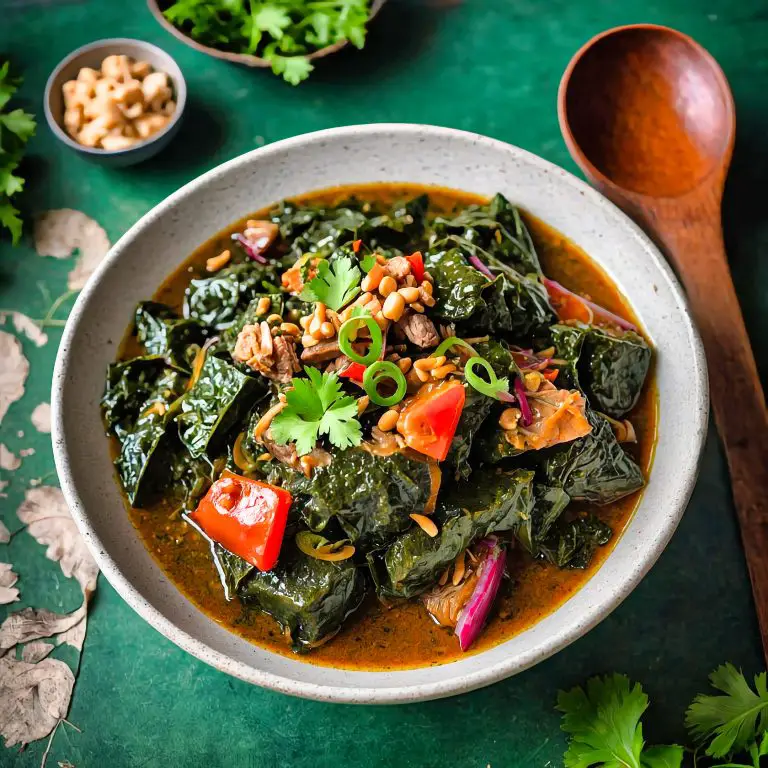
Pondu, also known as cassava leaf stew, is a quintessential dish in Congolese food culture. This traditional African recipe utilizes cassava leaves, which are finely pounded or blended to achieve a smooth consistency. In African cooking, these leaves are highly valued for their nutritional content and are a staple in many African food recipes, particularly in the Democratic Republic of the Congo. The preparation begins by simmering the processed cassava leaves with water, allowing them to soften and release their flavors.
To enhance the taste, ingredients such as onions, leeks, green peppers, and garlic are coarsely blended and added to the pot. Palm oil, a common component in traditional African recipes, is introduced to impart a rich, earthy flavor and vibrant color to the stew. Some variations of Pondu include the addition of eggplant, scotch bonnet peppers, and canned sardines or mackerel, providing depth and protein to the dish. Seasoning with bouillon cubes and salt ensures a well-rounded flavor profile, characteristic of African stews.
Pondu is typically served with starchy accompaniments such as rice, fufu, or plantains, aligning with common practices in African food on a plate. Its hearty and nutritious composition makes it a favorite among African foods, offering both flavor and sustenance. For those exploring how to cook Congolese food, Pondu serves as an excellent example of African food healthy cooking, as it is rich in vitamins and minerals. The dish’s versatility allows for adaptations, including African food vegetarian versions that omit fish or meat. Overall, Pondu stands as one of the best Congolese food offerings, embodying the essence of African cooking through its use of indigenous ingredients and traditional preparation methods.
7. Congolese Mapa or Bofolo Recipe
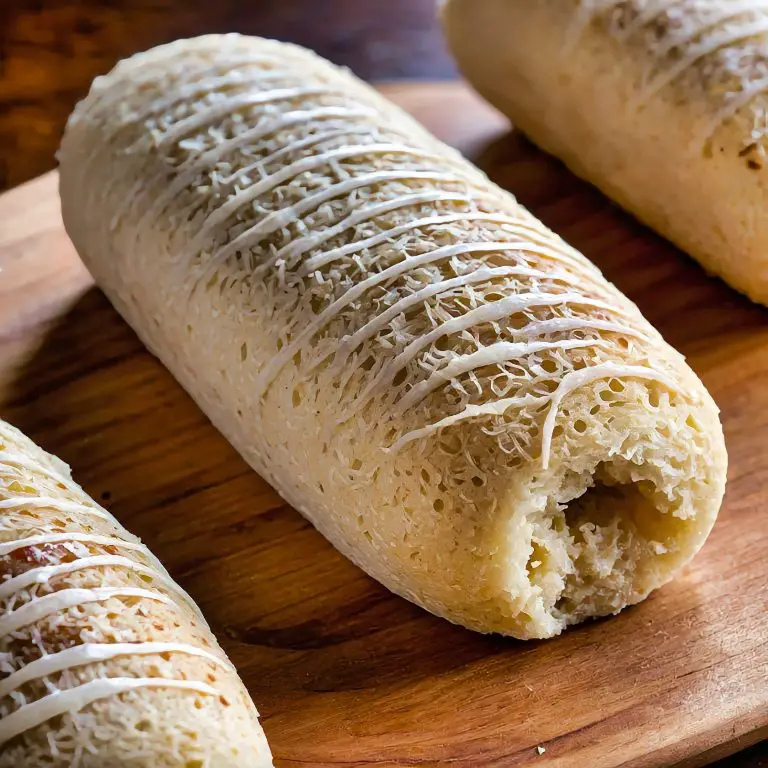
Mapa, also known as Bofolo, is a cherished component of Congolese food, particularly enjoyed as a snack or accompaniment in various African food recipes. This traditional African recipe involves the fermentation of cassava dough, a staple in the Democratic Republic of the Congo. The process begins by peeling and soaking cassava roots in water for several days, allowing natural fermentation to occur. This method is prevalent in African cooking, where fermentation enhances both the flavor and digestibility of the final product.
Once adequately fermented, the cassava is drained, mashed, and sometimes mixed with ingredients like powdered milk, sugar, and peanuts to enrich the flavor. Water is added to achieve the desired consistency, and the mixture is then wrapped in banana leaves and boiled until firm. The result is a slightly tangy, dense bread-like product that pairs well with various African stews and soups. Mapa is often enjoyed alongside dishes like Pondu or Fumbwa, complementing the rich flavors typical of Congolese African food.
The preparation of Mapa reflects the resourcefulness inherent in African food recipes, utilizing available ingredients and traditional techniques to create nourishing and satisfying foods. For those interested in how to cook Congolese food, making Mapa offers insight into the fermentation processes valued in African cooking. Its unique taste and texture make it a distinctive element of African food on a plate, and its composition aligns with African food healthy practices, providing energy and essential nutrients. As a staple in Congolese food recipes, Mapa exemplifies the best of traditional African recipes, highlighting the ingenuity and cultural significance of African foods.

8. Congolese Mpiodi Recipe
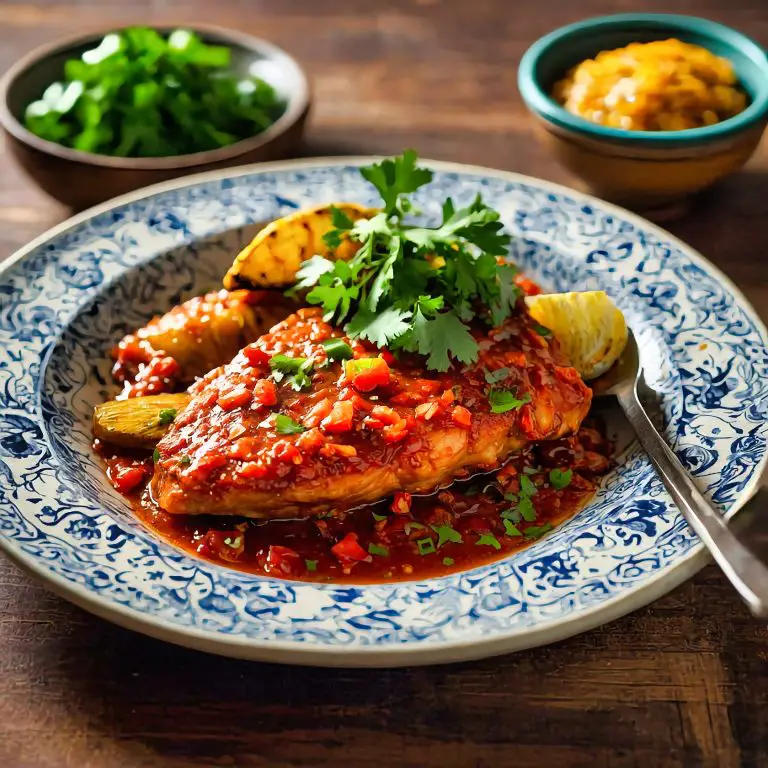
Mpiodi, commonly known as horse mackerel, is a cherished component of Congolese food, particularly in urban areas like Kinshasa. This fish, often referred to as the “friend of Kinois,” is a staple in many African food recipes due to its affordability and availability. In traditional African recipes, Mpiodi is prepared using various methods, each highlighting the fish’s natural flavors.
One popular preparation involves marinating the fish with a blend of spices, including garlic, ginger, and chili peppers, which are common in African cooking. The marinated fish is then grilled over an open flame or baked, resulting in a smoky and flavorful dish that is a favorite in Congolese African food culture. This method of preparation is not only flavorful but also aligns with African food healthy practices, as it requires minimal added fats.
Another common method is frying the Mpiodi. The fish is cleaned and seasoned with salt and pepper, sometimes with the addition of lemon juice to enhance its flavor. It is then deep-fried until the skin becomes crispy, offering a delightful contrast to the tender flesh inside. This fried version is often enjoyed with side dishes like plantains, cassava, or rice, which are staples in African food on a plate.
Mpiodi can also be incorporated into stews, combined with tomatoes, onions, and various spices to create a hearty African stew. This preparation showcases the versatility of Mpiodi in Congolese food recipes and highlights the rich flavors characteristic of African cooking. The fish absorbs the flavors of the stew while contributing its distinct taste, resulting in a satisfying and nutritious meal.
9. Congolese Chicken Mayo Recipe
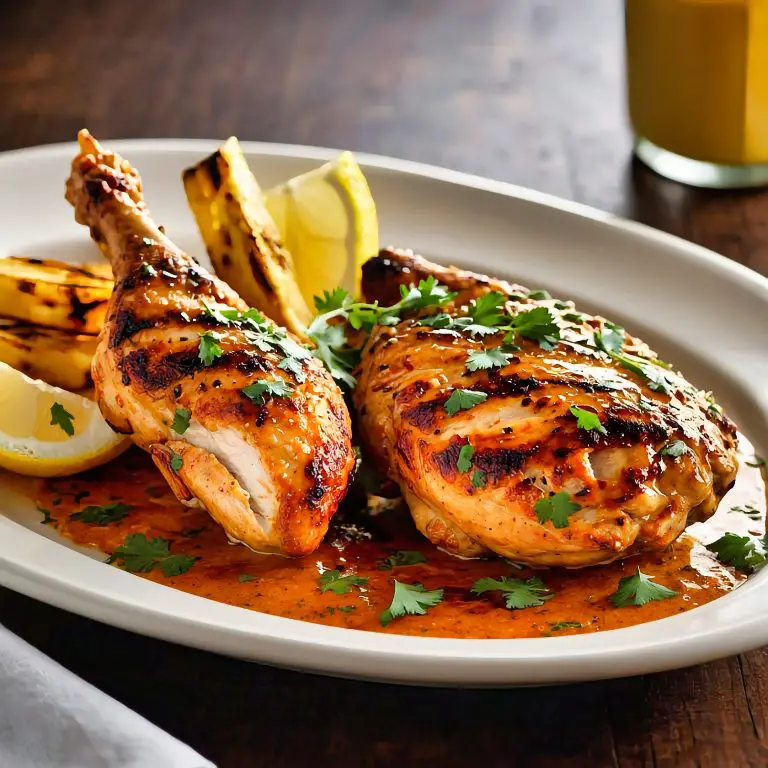
Congolese Chicken Mayo is a contemporary addition to Congolese food, reflecting the fusion of traditional African recipes with modern culinary influences. This dish features chicken pieces marinated in a mixture of mayonnaise, mustard, and a blend of spices, resulting in a creamy and flavorful coating that enhances the natural taste of the chicken. The use of mayonnaise in African cooking is relatively recent, showcasing the adaptability of Congolese cuisine to incorporate new ingredients while maintaining its distinctive flavors.
The preparation begins with marinating the chicken in the mayonnaise mixture, which may include seasonings such as garlic, paprika, and chili peppers to add depth and heat. The marinated chicken is then grilled or baked until cooked through, developing a savory crust that complements the tender meat inside. This method of cooking aligns with African food healthy practices, as it allows excess fat to render off while preserving moisture and flavor.
Serving suggestions for Congolese Chicken Mayo often include side dishes like plantains, cassava, or a fresh salad, providing a balanced meal that reflects the diversity of African food on a plate. The combination of creamy, spicy, and savory elements makes this dish a standout in Congolese food recipes, appealing to those seeking both comfort and excitement in their meals.
For individuals exploring how to cook Congolese food, Chicken Mayo offers an accessible introduction to the fusion of traditional and modern flavors in African cooking. Its straightforward preparation and bold taste make it a favorite among African foods, particularly in urban areas where culinary innovation is embraced. The dish exemplifies the best of Congolese African food, showcasing the creativity and adaptability of traditional African recipes in the contemporary culinary landscape.
10. Congo Squares Recipe
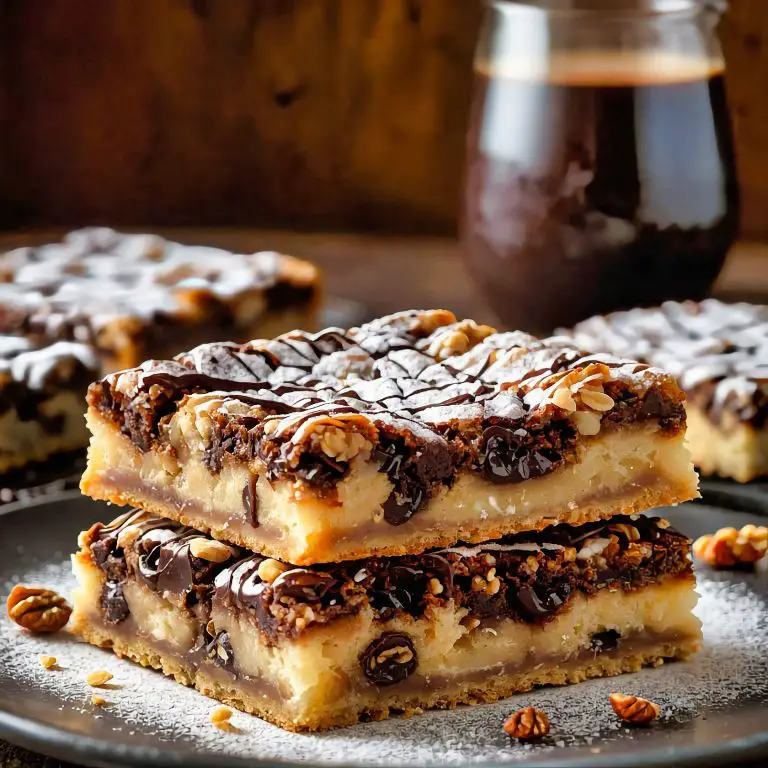
Congo Squares, also known as Congo Bars, are a delightful dessert that has found its way into various culinary traditions, including those of the Democratic Republic of the Congo. These rich and chewy bars are reminiscent of blondies and are made by combining butter, brown sugar, eggs, flour, and chocolate chips. The result is a sweet treat that offers a satisfying contrast between a dense, cake-like base and pockets of melted chocolate.
The preparation of Congo Squares begins by melting butter and mixing it with brown sugar to create a smooth, caramel-like base. Eggs are then incorporated, followed by the gradual addition of flour, baking powder, and salt to form a thick batter. Chocolate chips and, occasionally, chopped nuts are folded in to add texture and richness. The batter is spread evenly in a baking pan and baked until golden brown, resulting in a dessert that is both indulgent and comforting.
While the exact origins of Congo Squares are debated, they have become a popular part of African food recipes, enjoyed during special occasions and gatherings. Their simplicity and rich flavor make them a popular choice among African foods, appealing to both children and adults alike. The use of readily available ingredients and straightforward preparation methods align with the principles of African cooking, emphasizing resourcefulness and flavor.
For those interested in how to cook Congolese food, Congo Squares offer a sweet complement to the savory dishes typically associated with the cuisine. They can be served alongside fresh fruit or a scoop of ice cream, providing a delightful end to a meal. The versatility and universal appeal of Congo Squares have secured their place in the repertoire of traditional African recipes, highlighting the sweet side of African food culture.
11. Congolese Vegan Poulet Moambe Recipe
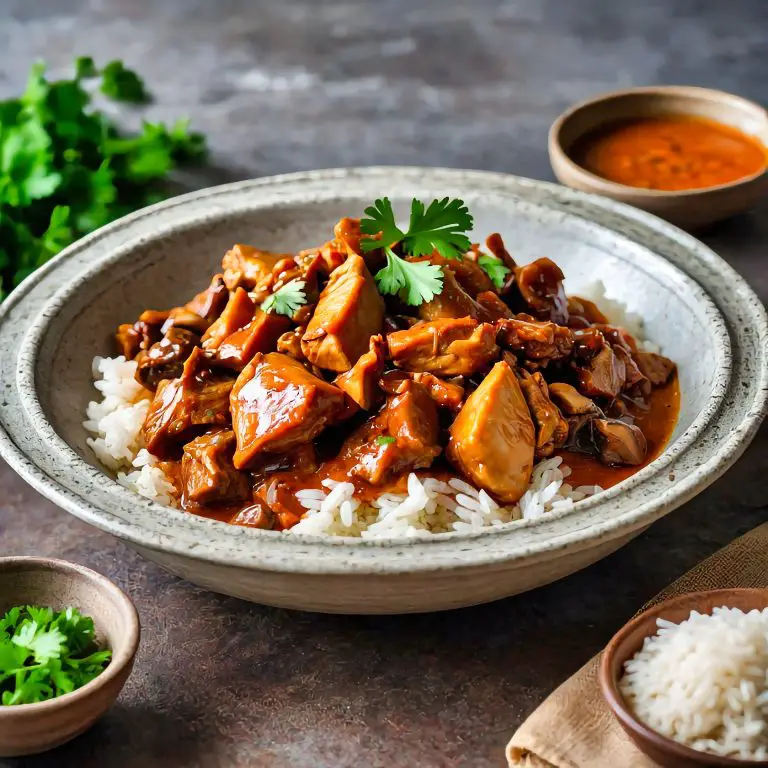
The Vegan Poulet Moambe is a plant-based adaptation of the traditional Congolese dish, Moambe Chicken, which is considered the national dish of the Democratic Republic of the Congo. This vegan version captures the rich and savory flavors characteristic of Congolese food while catering to those who prefer a plant-based diet. In this recipe, plant-based chicken substitutes are used in place of poultry, providing a similar texture and taste.
The dish is prepared by sautéing onions, garlic, and ginger in vegetable oil until fragrant. Chopped tomatoes and tomato paste are then added, creating a robust base for the sauce. The incorporation of peanut butter lends a creamy and nutty depth, which is a hallmark of traditional African recipes. Seasonings such as chili flakes, salt, and pepper are used to enhance the flavor profile, adding a subtle heat that complements the richness of the sauce.
The plant-based chicken pieces are then introduced into the sauce, allowing them to absorb the flavors as the mixture simmers. This method of preparation aligns with African cooking techniques that emphasize slow simmering to meld flavors together. The result is a hearty and satisfying dish that mirrors the comforting qualities of the original Moambe Chicken. Serving suggestions for Vegan Poulet Moambe include pairing it with staple side dishes commonly found in African food recipes, such as rice, fufu, or steamed vegetables.
These accompaniments help balance the rich and savory notes of the dish, providing a well-rounded meal. For those interested in how to cook Congolese food with a plant-based approach, this recipe offers an accessible and flavorful introduction. It exemplifies the adaptability of traditional African recipes to accommodate dietary preferences while preserving the essence of Congolese cuisine. The Vegan Poulet Moambe stands as a testament to the versatility of African cooking, showcasing how traditional flavors can be maintained in vegan adaptations.
This dish not only caters to vegan individuals but also appeals to those seeking to explore the diverse spectrum of African foods. By substituting plant-based ingredients for animal products, the recipe aligns with African food healthy practices, emphasizing the use of wholesome and nutritious components. Overall, the Vegan Poulet Moambe is a delightful addition to the repertoire of Congolese food recipes, offering a compassionate and health-conscious alternative without compromising on flavor or cultural authenticity.
12. Congolese Moambe Chicken Recipe
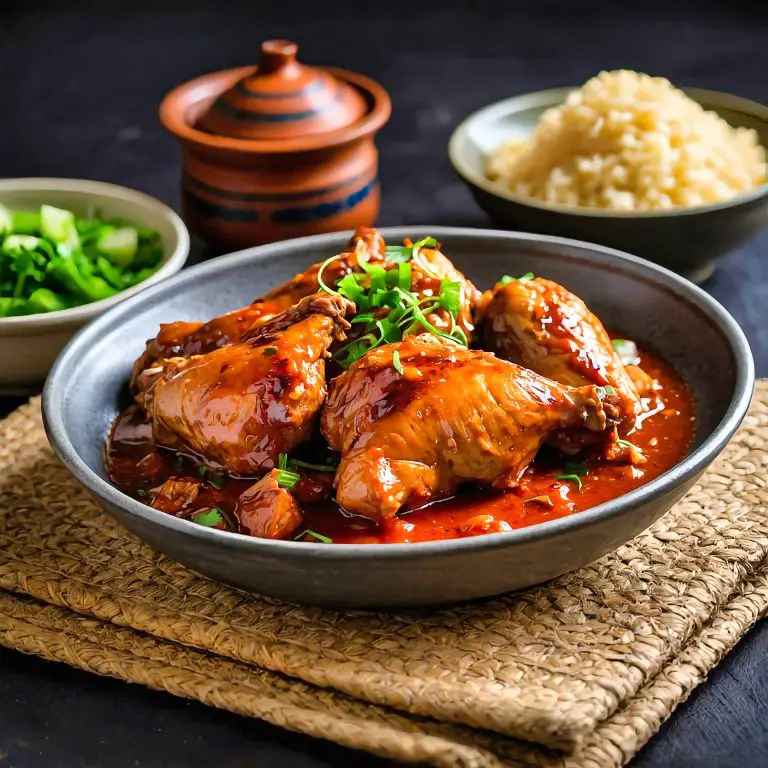
Moambe Chicken, also known as Poulet à la Moambé, is a savory chicken dish popular in Central Africa and considered the national dish of the Democratic Republic of the Congo. The dish itself is made by combining chicken, spices, and palm butter to create a stew-like consistency. A number of local or regional variations exist across the Congo and Central Africa; the dish is also known outside the continent.
The preparation of Moambe Chicken begins with marinating chicken pieces in a mixture of lemon juice, salt, and spices such as cumin and smoked paprika. This marinade imparts a subtle tanginess and depth of flavor to the meat. The marinated chicken is then browned in red palm oil, a staple in many African food recipes, which imparts a distinctive color and richness to the dish. Following this, onions, garlic, and ginger are sautéed until aromatic, creating a flavorful base.
Chopped tomatoes and tomato paste are added, contributing acidity and sweetness that balance the richness of the palm oil. The key component, moambe sauce, is introduced next. Traditionally, this sauce is made from palm nut pulp, but variations may include peanut butter to achieve a similar creamy consistency and nutty flavor. The browned chicken pieces are returned to the pot, and the mixture is simmered gently, allowing the flavors to meld and the chicken to become tender. Okra is sometimes added during the simmering process, lending a subtle earthiness and helping to thicken the sauce.
Moambe Chicken is customarily served with starchy accompaniments such as rice, fufu, or boiled plantains, which are common in African food on a plate. These sides complement the hearty stew, absorbing the flavorful sauce and providing a balanced meal. In some regions, the dish is garnished with hard-boiled eggs or accompanied by saka saka (cassava leaves), adding layers of texture and flavor.
Moambe chicken (Poulet Moambe) is a savory and versatile Congo food that has an exciting and unique taste! Moambe chicken is a delightfully tasty chicken dish native to Central Africa. Also called ‘Poulet Moambe,’ this savory Congo food is deemed the national dish of both Congos – The Republic of Congo and the Democratic Republic of the Congo.
Interestingly, Moambe chicken is also considered the national dish of Angola (moamba de galinha) and Gabon (poulet nyembwe). It is also a household name in Belgium.
13. Congolese Muamba Nsusu Recipe
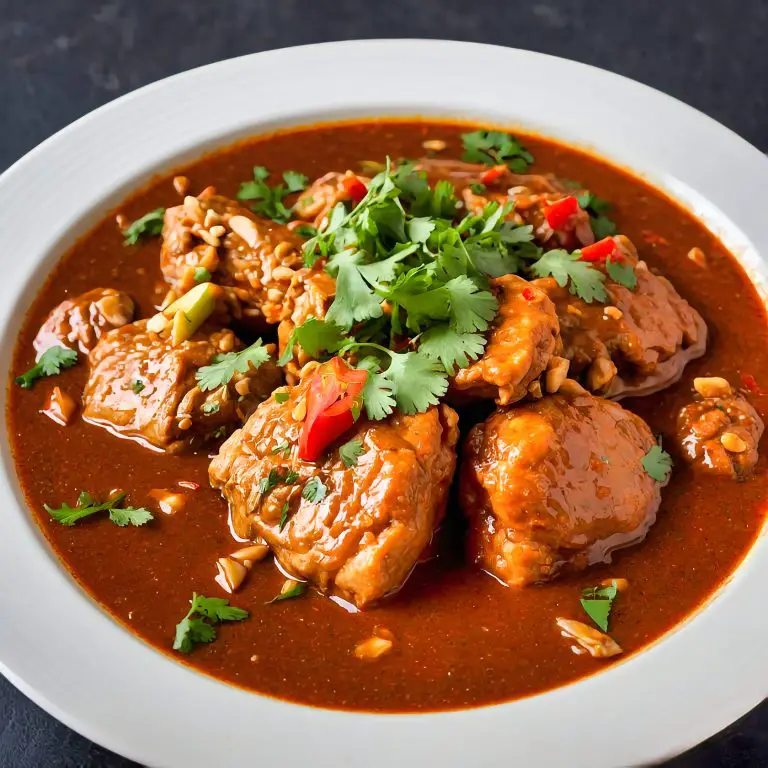
Muamba Nsusu, also known as Congolese Chicken Peanut Soup, is a traditional dish from the Democratic Republic of the Congo that exemplifies the rich and hearty flavors characteristic of African cooking. The name “Muamba Nsusu” translates to “chicken in palm oil,” highlighting the key ingredients used in this savory stew. This dish is a staple in Congolese food culture and is cherished for its comforting and nourishing qualities.
The preparation of Muamba Nsusu begins with marinating chicken pieces, typically drumsticks or thighs, in a mixture of lemon juice, turmeric, paprika, and sliced green chili peppers. This marinade imparts a subtle tanginess and a hint of heat to the meat, enhancing its flavor profile. After marinating, the chicken is seared in red palm oil, a common ingredient in African food recipes, particularly in Central Africa. The palm oil not only adds a distinctive color but also enriches the dish with its unique taste.
Once the chicken is browned, it is set aside, and in the same pot, onions are sautéed until translucent. Minced red chilies and ground cumin are then added, followed by chopped tomatoes and fresh spinach. These ingredients are cooked together until the spinach wilts and the tomatoes break down, creating a flavorful base for the stew. The browned chicken is returned to the pot, and a mixture of creamy peanut butter and vegetable broth is poured over the ingredients. The stew is then brought to a boil, reduced to a simmer, and cooked gently for about 45 minutes, allowing the flavors to meld and the chicken to become tender.
The result is a thick, savory stew with a harmonious blend of nutty, spicy, and earthy flavors. The peanut butter adds a creamy richness that balances the heat from the chilies, while the palm oil imparts a depth of flavor unique to traditional African recipes. Muamba Nsusu is typically served with starchy accompaniments such as fufu, rice, or boiled plantains, which are common in African food on a plate. These sides complement the hearty stew, absorbing the flavorful sauce and providing a satisfying meal.
For those interested in how to cook Congolese food, Muamba Nsusu offers an authentic experience of African cooking techniques and ingredients. Its rich, complex flavors and comforting qualities make it a popular dish in Congolese food recipes. Whether enjoyed during family gatherings or special occasions, Muamba Nsusu exemplifies the warmth and hospitality inherent in African food culture.
14. Congo Peanut Butter Mousse Recipe

Congo Peanut Butter Mousse is a delightful dessert that showcases the fusion of traditional African ingredients with contemporary culinary techniques. While savory Congolese cuisine is rich and diverse, the country’s desserts often feature fruits and nuts, with peanuts playing a significant role. This mousse offers a sweet and creamy treat that reflects the flavors of Congolese food culture.
The preparation of this mousse begins with whipping heavy cream until stiff peaks form, creating a light and airy base. In a separate bowl, creamy peanut butter is combined with softened cream cheese and powdered sugar, resulting in a smooth and rich mixture. The whipped cream is then gently folded into the peanut butter mixture in batches, ensuring a fluffy and mousse-like consistency. This method preserves the lightness of the whipped cream while incorporating the nutty richness of the peanut butter.
Once fully combined, the mousse is transferred into serving dishes or ramekins and chilled in the refrigerator for at least 30 minutes to allow it to set. The chilling process enhances the texture, making it firm yet velvety. Before serving, the mousse can be garnished with crushed peanuts, chocolate shavings, or a drizzle of honey, adding visual appeal and additional layers of flavor.
This dessert is a testament to the adaptability of traditional African recipes, incorporating local ingredients like peanuts into a format that appeals to modern palates. The use of peanut butter provides a familiar yet distinctive taste, while the mousse format offers a light and indulgent experience. For those exploring African food recipes, the Congo Peanut Butter Mousse presents an accessible and delightful way to experience the sweet side of Congolese cuisine.
Summing Up: Congolese Recipes and Congo Food
Congolese recipes are a rich blend of ingredients, herbs, and spices combined to create some of the most flavorful dishes in the world. From plantains to fish, Congolese recipes are a true tastebud delight. Whether you’re looking for an easy weeknight dinner or an exotic dish for a special occasion,Congolese recipes have something for everyone.
As you explore these delectable dishes of Congo foods, remember to bring your appetite and an open mind – you’ll be glad you did. As the Congolese proverb says, “a meal without spice is like a market without customers” – enjoy the richness of Congolese recipes and be transported to a flavorful new world!
The Congolese recipes we’ve explored in this article prove that the celebrated flavors of this region are as diverse as they are delicious. With the proper ingredients and a little creativity, anyone can bring these flavorful dishes to life. So, what are you waiting for? Go ahead, put on your chef’s hat and dive into a world of tantalizing tastes.

3 comments
I cant believe they left out the classic Congolese Madesu recipe! Its a staple dish that deserves a spot on this list. Whos with me on this? Lets give Madesu some love! 🍲💪
I cant believe they didnt include the Congolese Kwanga recipe in the list! Its a classic dish that shouldnt be overlooked. Do you agree or have another favorite? Lets discuss!
I cant believe they didnt include the famous Congolese Poulet Moambe recipe! Its a classic dish thats a must-try for anyone wanting an authentic taste of Congo. What a missed opportunity!
Comments are closed.